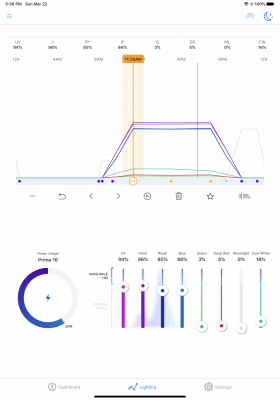- Joined
- Jan 11, 2020
- Messages
- 444
- Reaction score
- 375
I'm not sure how or why this is happening considering I have nearly undetectable nitrate and phosphates... but... my nearly three-month-old IM 10 gallon has the first signs of green hair algae. I just noticed it today. It's litterally just a really small amount right now.
I don't want to dump a bunch of chemicals in this small amount of water... especially something like Vibrant.
So what's the best way to get ahead of it? It's the crevices of the rock so I can't get my fingers in to pull it out, I could probably pull it with the long forceps I have though. Should I pull it, try to wait it out... what? I have a Trochus in the tank that's done a great job so far, I'm sure if it could get to this GHA it wouldn't take off. I don't think it can get to it though because of where it is.
Thoughts?
Here's the water parameters and light schedule..


I don't want to dump a bunch of chemicals in this small amount of water... especially something like Vibrant.
So what's the best way to get ahead of it? It's the crevices of the rock so I can't get my fingers in to pull it out, I could probably pull it with the long forceps I have though. Should I pull it, try to wait it out... what? I have a Trochus in the tank that's done a great job so far, I'm sure if it could get to this GHA it wouldn't take off. I don't think it can get to it though because of where it is.
Thoughts?
Here's the water parameters and light schedule..






















